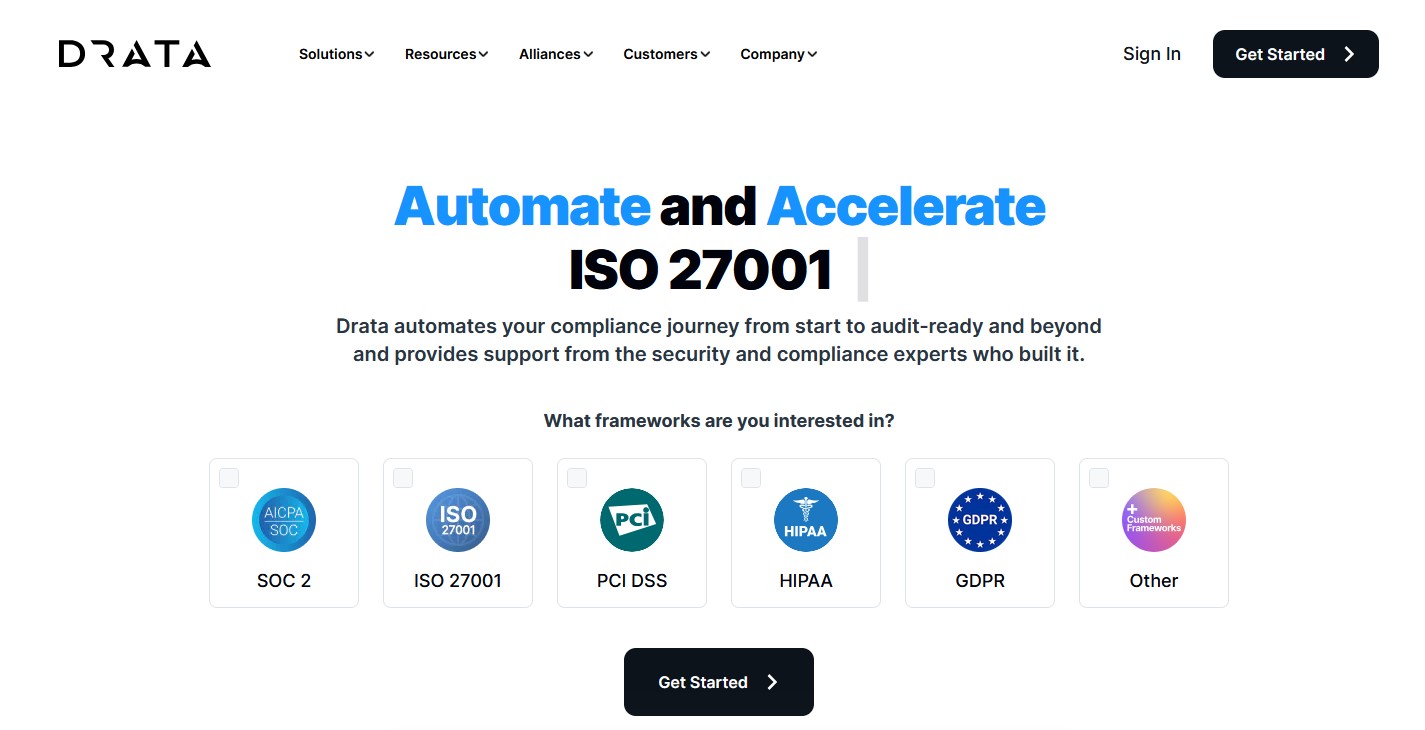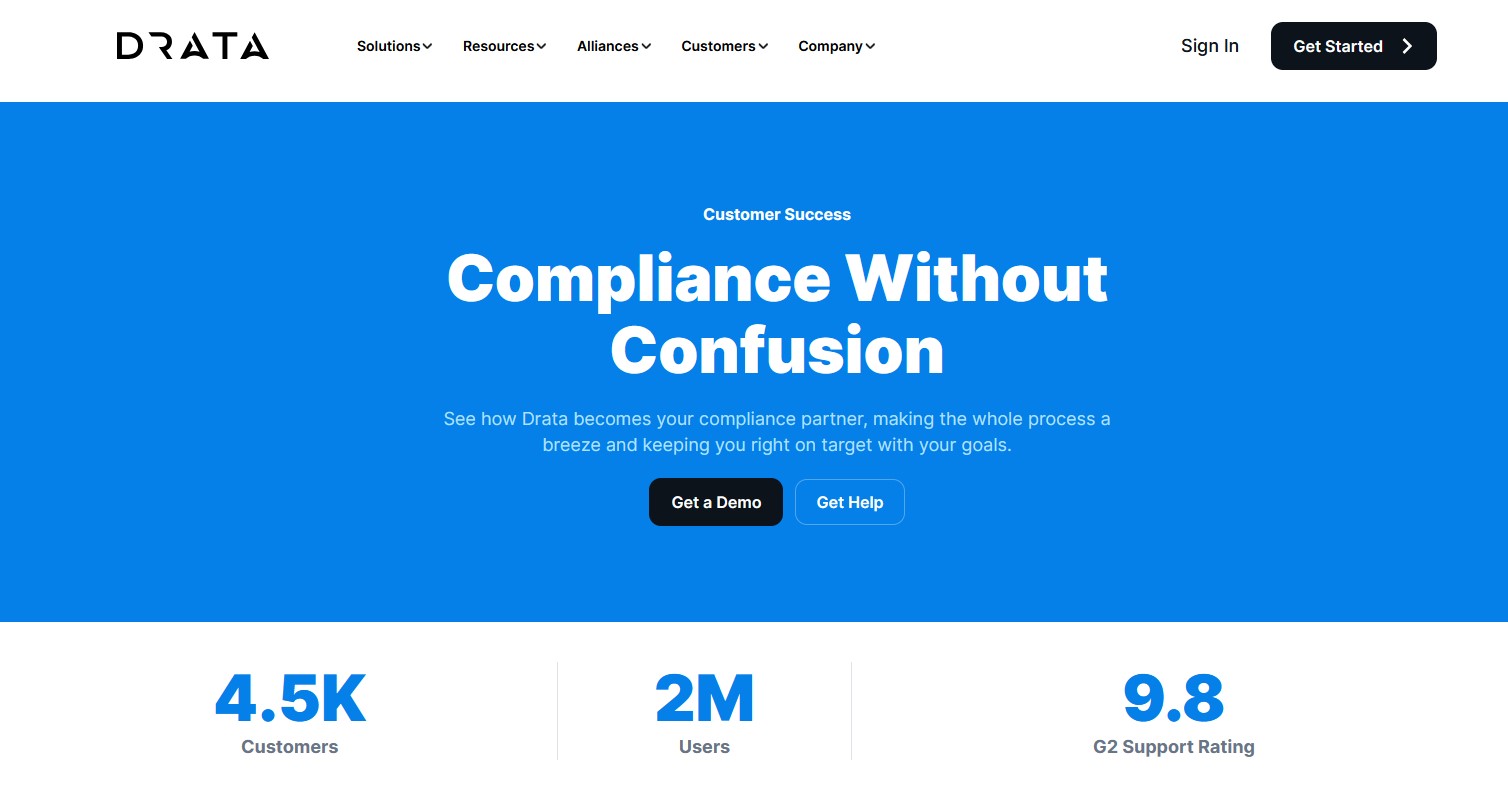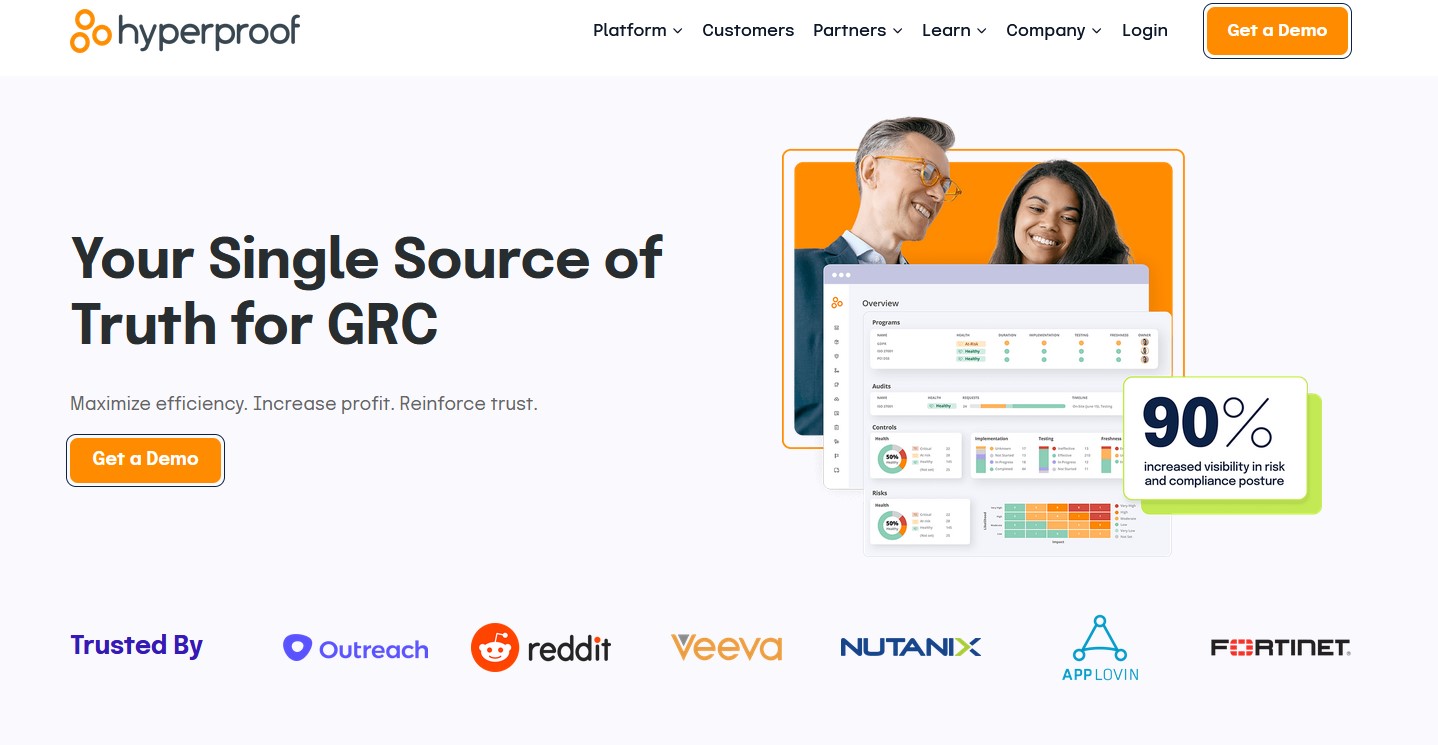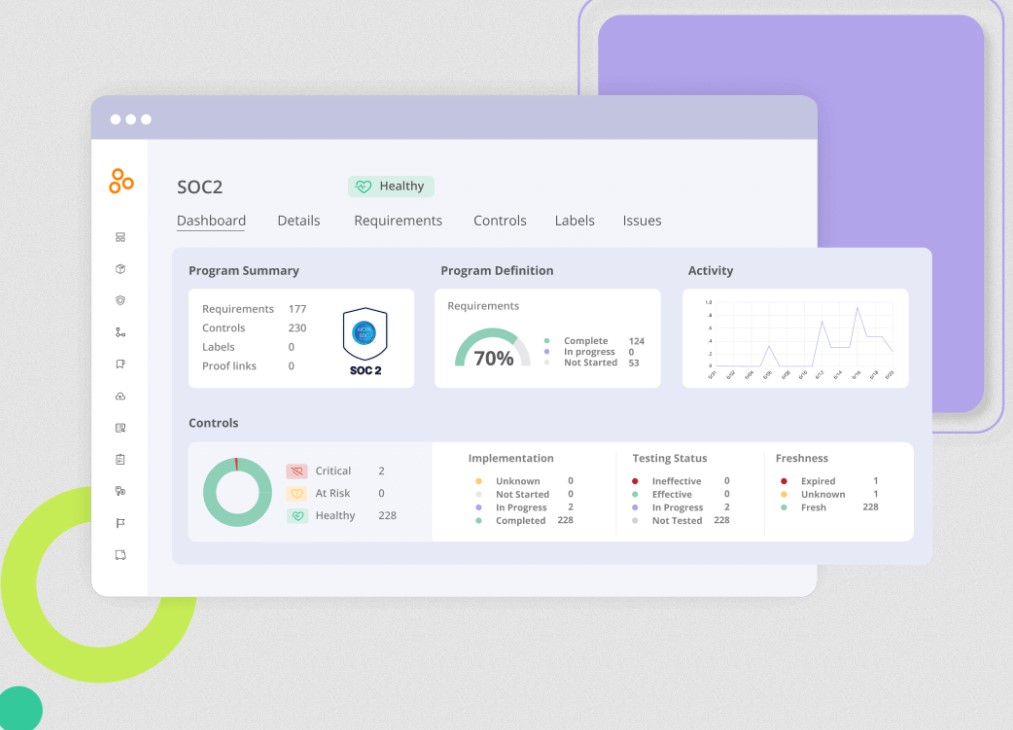Choosing the right compliance management tool is crucial for organizations aiming to navigate complex regulatory landscapes efficiently. This article compares Drata and Hyperproof, two leading RegTech solutions that streamline compliance processes and enhance organizational resilience.
Organizations can make an informed decision based on their specific compliance needs by examining their features, benefits, and target audiences. Whether you are a growing startup or an established enterprise, understanding the strengths and weaknesses of each platform can significantly impact your decision-making process.
Overview of Compliance Management Software
Compliance management software plays a pivotal role in helping organizations assess risks, implement security measures, and demonstrate ongoing compliance. This is essential to mitigate the risk of data breaches, regulatory penalties, and reputational damage. Software like this automates and simplifies the complex tasks of tracking regulatory requirements, managing compliance documentation, and preparing for audits.
Drata and Hyperproof address these challenges with unique approaches tailored to different aspects of compliance management. They offer a range of tools to help businesses maintain compliance, reduce administrative burdens, and improve overall security postures. The right compliance software not only ensures adherence to regulations but also builds trust with customers, investors, and stakeholders by demonstrating a commitment to security and governance.
Methodology
This comparison evaluates Drata and Hyperproof based on several critical criteria:
- Compliance Framework Support: How well each platform supports various compliance frameworks such as SOC 2, HIPAA, ISO 27001, GDPR, and others. The breadth and depth of framework support can determine the tool’s applicability to different industries and regulatory environments.
- Integration Capabilities: The ability to integrate with other tools and systems in an organization’s tech stack. This includes integrations with cloud providers (AWS, Azure), productivity tools (Slack, Google Drive), and other security and compliance tools.
- Pricing Models: Analyzing the cost structure of each platform, including subscription fees, implementation costs, and any additional charges for advanced features or higher tiers of service.
- User Experience: Assessing the intuitiveness of the user interface, ease of navigation, and overall user satisfaction. This also considers the learning curve associated with each platform.
- Vendor Reputation: Evaluating customer reviews, industry recognition, and overall market presence. Vendor reputation can provide insights into the reliability and support quality of the platform.
- Customer Support Quality: The availability and responsiveness of customer support, including the types of support offered (24/7, dedicated account managers, training resources, etc.).
Drata Overview (DEMO)
Drata offers a robust foundation for achieving and maintaining compliance across various regulatory frameworks. It employs AI-driven processes, comprehensive policy templates, and boasts some of the shortest setup times in the compliance software industry.
Key Features
- Robust Compliance Management: Drata supports multiple regulatory frameworks using AI-driven processes and customizable policy templates, streamlining compliance efforts and reducing manual tasks.
- Quick Implementation and Configuration: With setup times as low as 4 weeks and configuration in 15–30 minutes, Drata ensures rapid deployment and quick adoption, minimizing disruptions.
- Integration and Scalability: Drata integrates with over 120 tools, offering flexibility and scalability to accommodate growing and evolving compliance needs.
- Comprehensive Compliance Monitoring: Real-time insights and continuous monitoring keep organizations audit-ready, proactively managing risks and enhancing security.
- Centralized Document Management: Drata simplifies audit preparations by centralizing compliance documentation, making it easily accessible for auditors and stakeholders.
Pros:
- Effective Policy and Risk Management: Particularly strong in handling tasks like HIPAA compliance, Drata offers robust solutions for policy and risk management.
- Streamlined Implementation: Staged onboarding and proactive support contribute to swift adoption and implementation.
- Cost-effective Templates: Pre-canned policies save on technical writing expenses, reducing overhead costs associated with compliance.
- Enhanced Operational Efficiency: Integration with SaaS ecosystems reduces operational overhead, promoting efficiency across organizational workflows.
- Multi-framework Support: Drata provides flexibility to comply with various regulatory standards, catering to diverse compliance needs.
Cons:
- Lack of Pre-built HITRUST Framework: Drata requires manual workarounds for HITRUST compliance, which can be a drawback compared to competitors.
- Limited Third-party Integrations: While Drata supports over 120 integrations, it falls short compared to competitors offering broader integration capabilities.
- Visibility of Tasks: Improvements are needed in task visibility and the user-friendly policy editor to enhance usability for all users.
- Complexity for New Users: The feature-rich interface may pose challenges for less experienced users adjusting to the platform.
- Configuration Limitations: The free trust center lacks configurability, limiting customization options for specific organizational needs.
Target Audience
Drata primarily caters to medium and large startups, enterprises, and auditors focusing on compliance standards like SOC 2. It is especially appealing to tech-savvy industries such as technology, finance, and healthcare, as well as global businesses navigating international regulatory landscapes. Organizations seeking robust compliance solutions with efficient implementation, strong policy management, and flexible integration capabilities will find Drata particularly beneficial.
Pricing
Drata offers a flexible pricing model designed to accommodate organizations of various sizes and compliance needs. The pricing structure is typically based on the number of employees and the specific compliance frameworks required. Drata provides a transparent pricing approach, ensuring organizations understand the costs upfront with no hidden fees. While Drata’s initial pricing may be higher compared to some competitors, the value lies in its swift implementation, robust support, and comprehensive compliance monitoring, leading to long-term savings by reducing the risk of non-compliance and associated penalties.
Vendor Reputation
Drata is highly regarded in the compliance management industry for its innovative use of AI-driven processes and rapid implementation capabilities. Customers frequently praise Drata for its user-friendly interface and responsive 24/7 customer support, which are essential during both the onboarding phase and ongoing operations.
The platform’s robust compliance monitoring and extensive integration options have received positive feedback from tech-savvy industries, especially in the technology, finance, and healthcare sectors. Known for its proactive approach to customer service, Drata ensures smooth operations and prompt issue resolution, bolstering its reputation.
Hyperproof Overview (DEMO)
Hyperproof focuses on automating compliance workflows and enhancing collaboration across teams. It centralizes compliance activities and documentation to streamline audit preparations and maintain continuous compliance. The company has engaged in some interesting fundraising rounds and strategic partnerships over the last few years.
Key Features
- Workflow Automation: Hyperproof automates compliance tasks to reduce manual effort and ensure consistency in compliance management processes.
- Centralized Documentation: It stores compliance evidence and documentation in a centralized repository for easy access and streamlined audit preparations.
- Collaboration Tools: Hyperproof facilitates collaboration among teams with features like task management, notifications, and shared workflows, enhancing team productivity.
- Reporting and Analytics: It provides detailed reports and analytics to track compliance progress and identify areas for improvement.
Pros:
- Workflow Automation: Automation reduces manual effort in compliance tasks, improving operational efficiency.
- Centralized Documentation: Enhanced audit readiness and regulatory compliance through centralized document management.
- Collaboration Tools: Facilitates team productivity and communication, improving overall efficiency.
- Reporting and Analytics: Provides actionable insights for continuous improvement in compliance posture.
Cons:
- Interface Usability: Interface may require familiarization for new users to maximize platform utilization.
- Integration Capabilities: Could benefit from broader system compatibility and third-party integrations.
- Specific Framework Support: May vary compared to specialized tools, requiring evaluation based on specific compliance needs.
Target Audience
Hyperproof is ideal for organizations looking to automate compliance workflows, enhance collaboration, and streamline compliance management across various industries and regulatory frameworks.
Pricing
Hyperproof’s pricing model is designed to be flexible and scalable, catering to businesses of all sizes. The platform offers tiered pricing plans based on the number of users and the specific features and integrations required. The platform’s pricing varies based on the size of your organization, and the complexity of your compliance needs. Robust automation features, centralized documentation, and advanced reporting capabilities are some of the available functions of the tool.
Hyperproof emphasizes budgetary transparency, providing clear pricing details to avoid surprises at renewal. Hyperproof’s cost-effectiveness is further enhanced by its ability to improve operational efficiency and reduce manual compliance efforts, making it a valuable investment for organizations seeking streamlined compliance management.
Vendor Reputation
Hyperproof is well-regarded for its emphasis on automating compliance workflows and enhancing team collaboration. It has garnered accolades for its comprehensive documentation management and real-time system monitoring features, which are crucial for maintaining continuous compliance. Customers appreciate Hyperproof’s intuitive user interface and the ability to customize controls and tasks, making it a versatile tool for various compliance needs. The platform’s strong focus on customer support and commitment to providing detailed reporting and analytics have enhanced its reputation among organizations managing complex compliance requirements across multiple frameworks.
Conclusion
When selecting compliance management software, conducting thorough research, exploring demos, and seeking user feedback can provide valuable insights into how each platform aligns with your organization’s compliance objectives. By prioritizing efficiency, scalability, and regulatory adherence, organizations can make an informed decision that supports their long-term compliance goals effectively.
Both Drata and Hyperproof offer robust solutions for compliance management, each catering to specific organizational needs and preferences. Organizations should consider factors such as budget constraints, integration requirements, and compliance complexity when choosing between these platforms. If your organization is more focused on HIPAA compliance than other frameworks (and if your budget is sizable), Drata would likely be the better pick. If you’re on the price-sensitive side of things, Hyperproof may be just what you’re looking for.




